On June 17th 2021, in a Regional Agency DUNEA and University of Dubrovnik collaboration, a manifestation called "BLUE EVENT" has been held, where three EU projects were presented: MARLESS, BLUEfasma and SeaClear. These three projects are funded through three different programs, and the link is the topic of blue growth - marine environment as driver of sustainable development, focusing on the circular economy and the problem of marine litter, with goals that include innovative environmental solutions in marine litter monitoring, collection and management.
- Home
- events - SEACLEAR
Every year in September, researchers from all over Europe are getting out of their laboratories to explain to the wide-public all the exciting things that they are doing. The idea is to popularize their work and showcase the impact it has on the lives of everyone. This year, Researchers' Night took place on 30th of September, and SEACLEAR was there to demonstrate the magnitude of the problem of marine litter, and what we do in order to solve it.
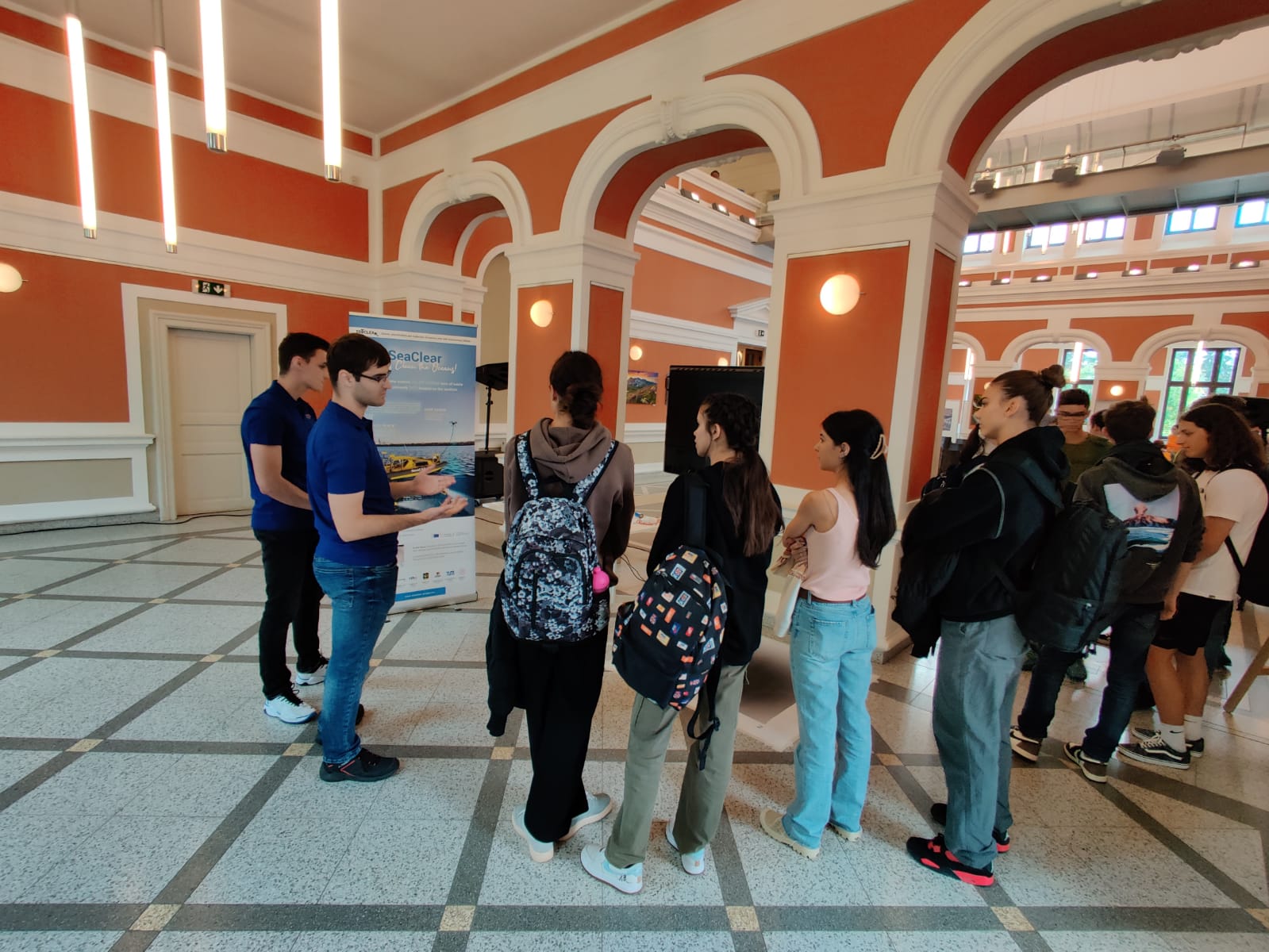 Tudor Santujeceanu explaining to the public our algorithms for scanning the seafloor for litter
Tudor Santujeceanu explaining to the public our algorithms for scanning the seafloor for litter
We participated in two parallel events that took place in Cluj-Napoca, home of our partners from TUCN. The weather conditions contributed to having a lot of people joining both events, and a chance for our researchers to disseminate the results of the project and it's impact on our every day lives.
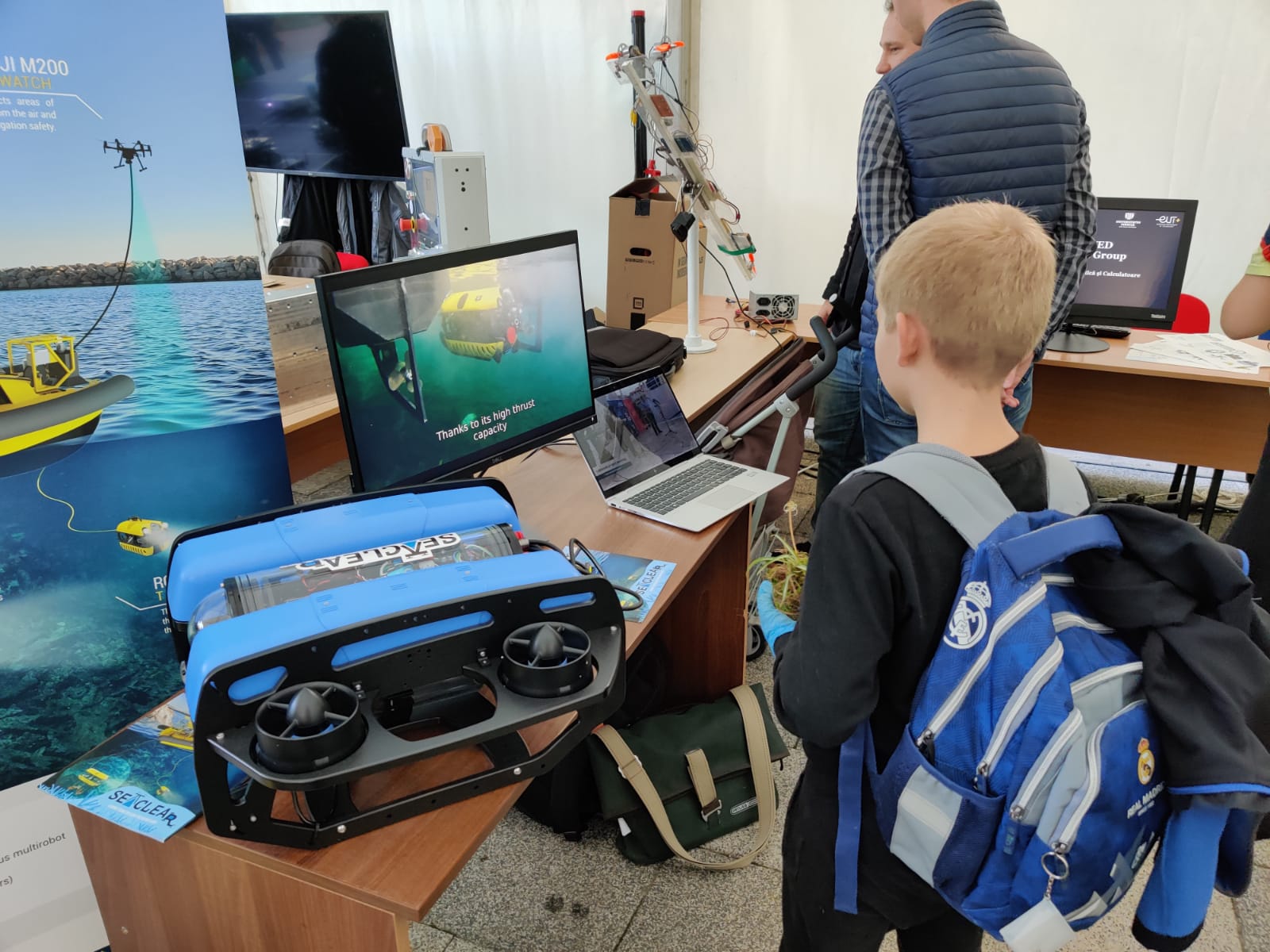 Young participants learn about the SEACLEAR system through explanation videos and mockups
Young participants learn about the SEACLEAR system through explanation videos and mockups
After almost four years of work, the final SeaClear demonstrations took place in the second week of October in Dubrovnik. On the 9th of October, our researchers demonstrated the capabilities of the SeaClear system in Bistrina bay, a region with intense mariculture activity. After placing litter samples in the water and mapping their true locations via attached buoys with the UAV, the SeaCAT performed a bathymetry scan, which revealed the initial positions of the litter. Then the observation ROV (mini-Tortuga) did an automated, detailed scan of the hotspot area to further detect smaller litter. Finally, the collection ROV automatically picked up the litter.
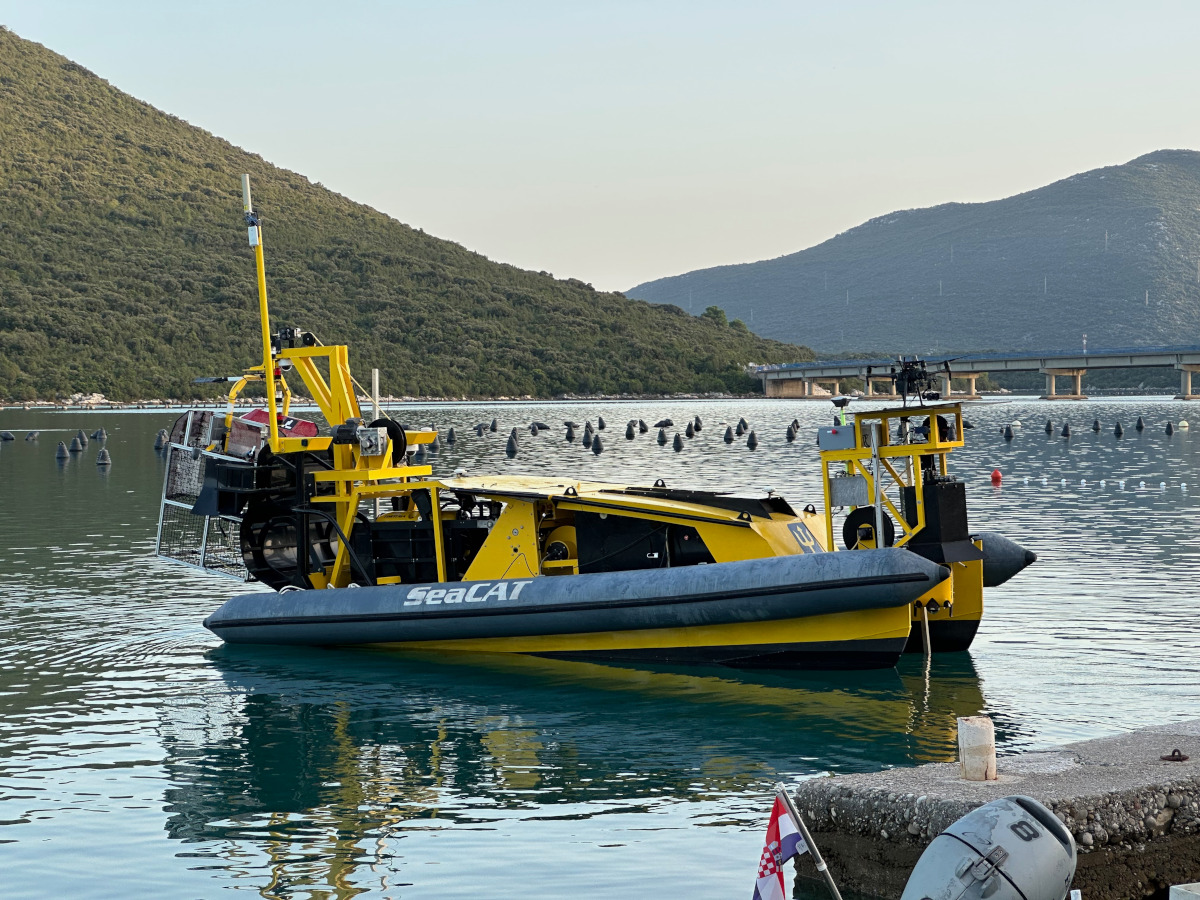 SeaCAT with Basket and ROVs ready to be deployed at Bistrina bay
SeaCAT with Basket and ROVs ready to be deployed at Bistrina bay
The second demonstration took place on the 12th of October on the shores of Lokrum island. The full SeaClear pipeline was tested, amid different water conditions from Bistrina: deeper, but with better visibility. Moreover, the litter found in Lokrum is more related to tourism and is therefore slightly different in nature. In addition to litter mapping and collection, this time around, litter items were also deposited in the litter basket. This is the first time that the full pipeline of the SeaClear system has been demonstrated on the same site, which is a huge step towards cleaning up the sea floor!
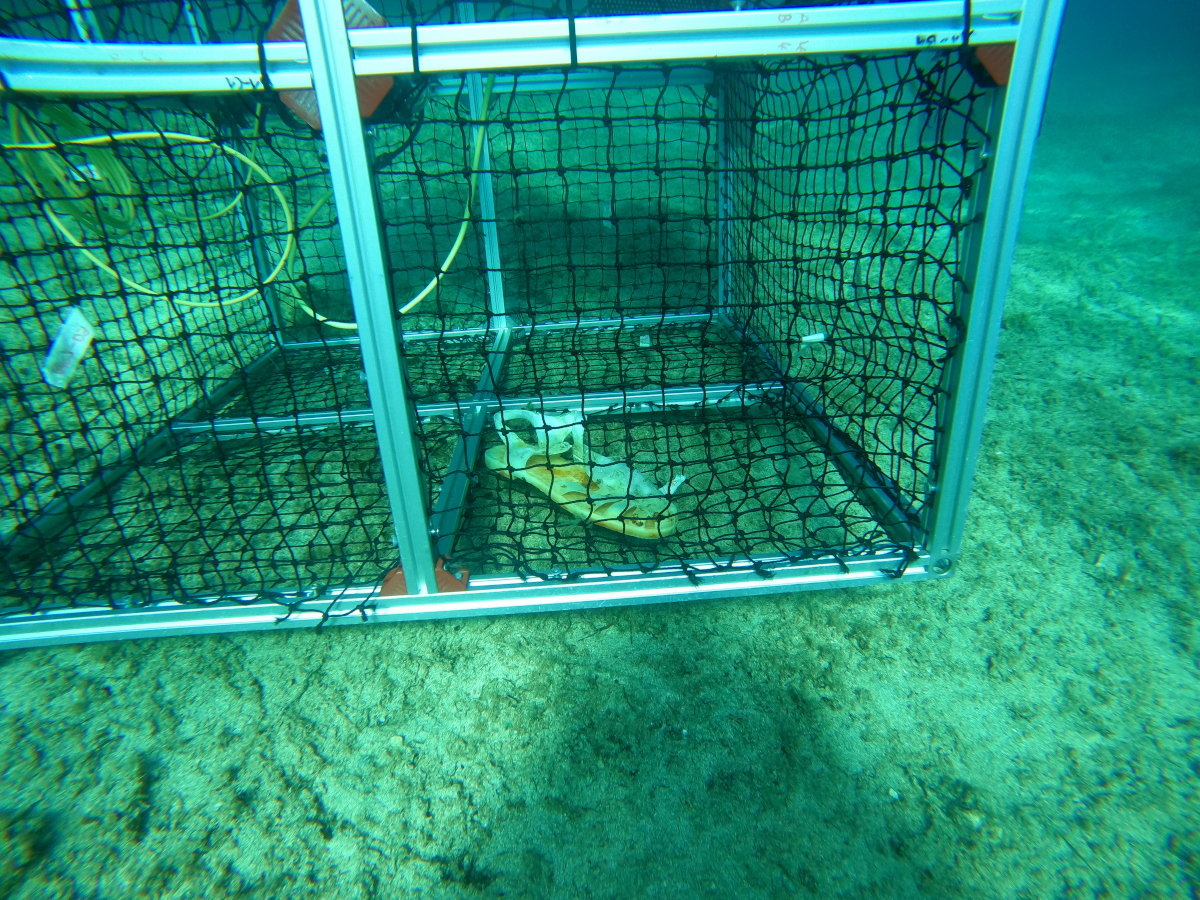 Litter deposited succesfully inside the collection basket
Litter deposited succesfully inside the collection basket
During this second demonstration, the research team together with EU evaluators were on-board the Naše More vessel, while the media and local-authority representatives were onboard the Zrinski boat. Underwater live streams were available on both ships, together with explanations of what is happening at each stage. This allowed journalists and evaluators to understand and better follow the steps taken for underwater litter detection, mapping, and collection.
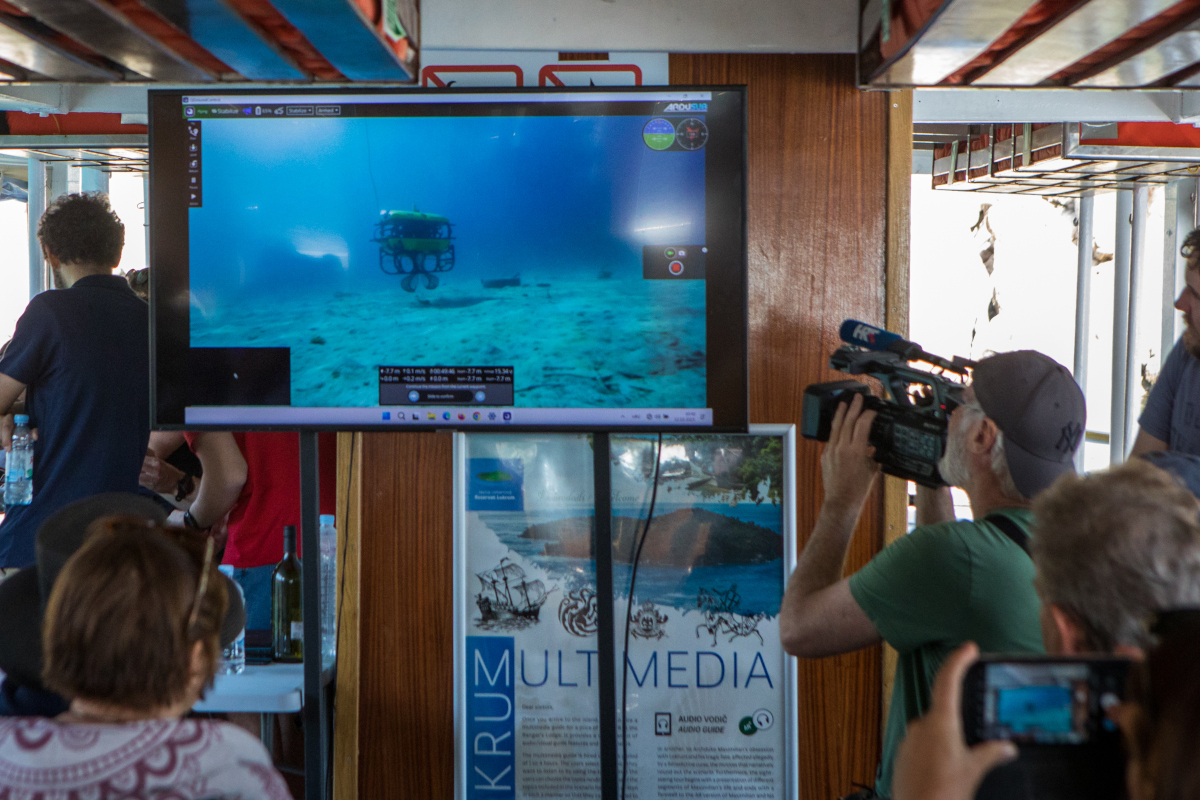 Live underwater view of litter picking on board the Zrinski boat
Live underwater view of litter picking on board the Zrinski boat
Finally, the day after the demonstration, on the 13th of October, the final SeaClear conference took place at the University of Dubrovnik. The event, titled: “SeaClear: Smart Robots and Human Hearts—for Clean Oceans” welcomed press, local authorities, researchers, and students, to disseminate the results of the SeaClear project. The work package leaders shared their experiences with automatic litter collection from the ocean floor, and lessons learned during this project.
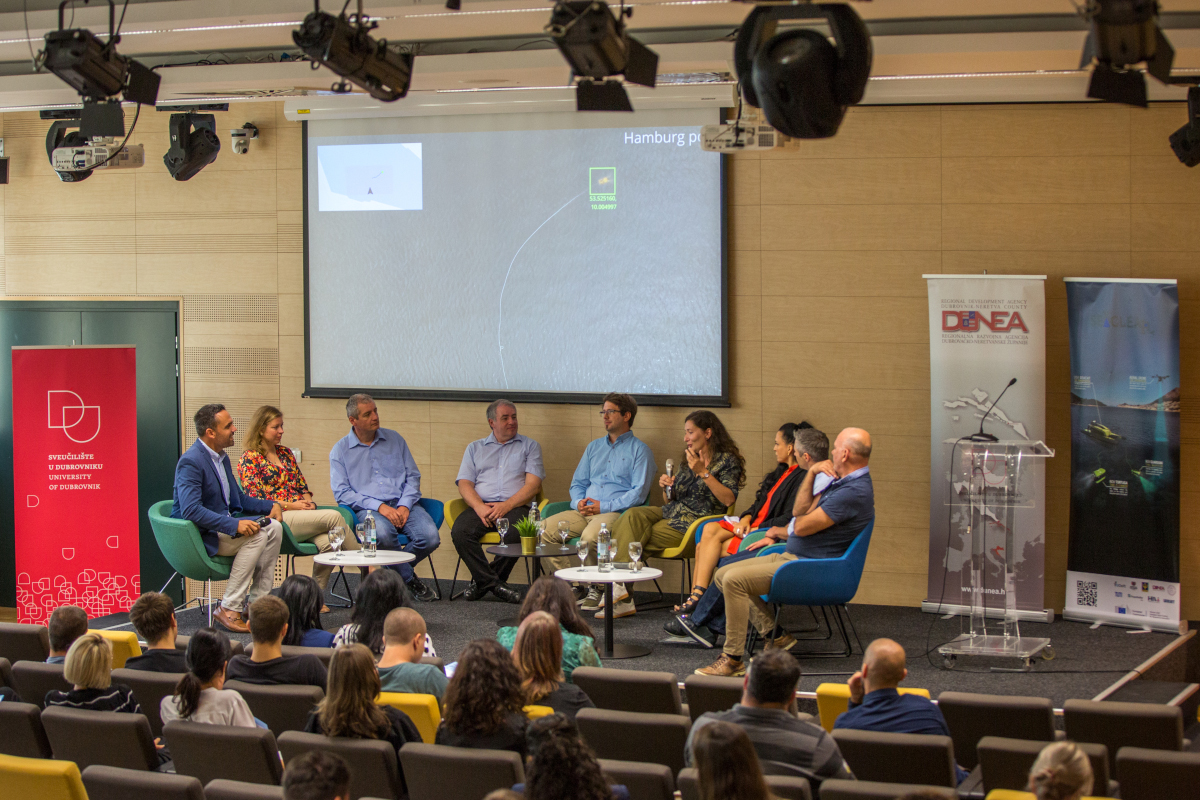 Discussion during the final SeaClear conference
Discussion during the final SeaClear conference
Overall, this demonstration has been seen as a positive step towards cleaning up the ocean floor both by the reviewers but also the media community that participated in the tests. Of course, the results of this project will not go unused: we are already working full speed on the continuation of this project in SeaClear 2.0, where we are planning to address the full life-cycle of litter collection, and improve upon the litter collection capabilities. If you would like to continue receiving news on the progress of cleaning up our ocean's floor, please subscribe to the SeaClear 2.0 newsletter.
On the 15th and 16th of September 2021, the first tests of the SeaClear robots took place in the Dubrovnik area, Croatia. This was the first time representatives from all the partners met live after the kick-off meeting of the project, due to the on-going pandemic due to CoVID-19.
As we are approaching the final trials for the SEACLEAR system, our team has gathered once again in Marseille from 27 of February until the 3rd of March for further tests. Updated versions of the components were tested alone and in combination with each other, to discover improvement points.
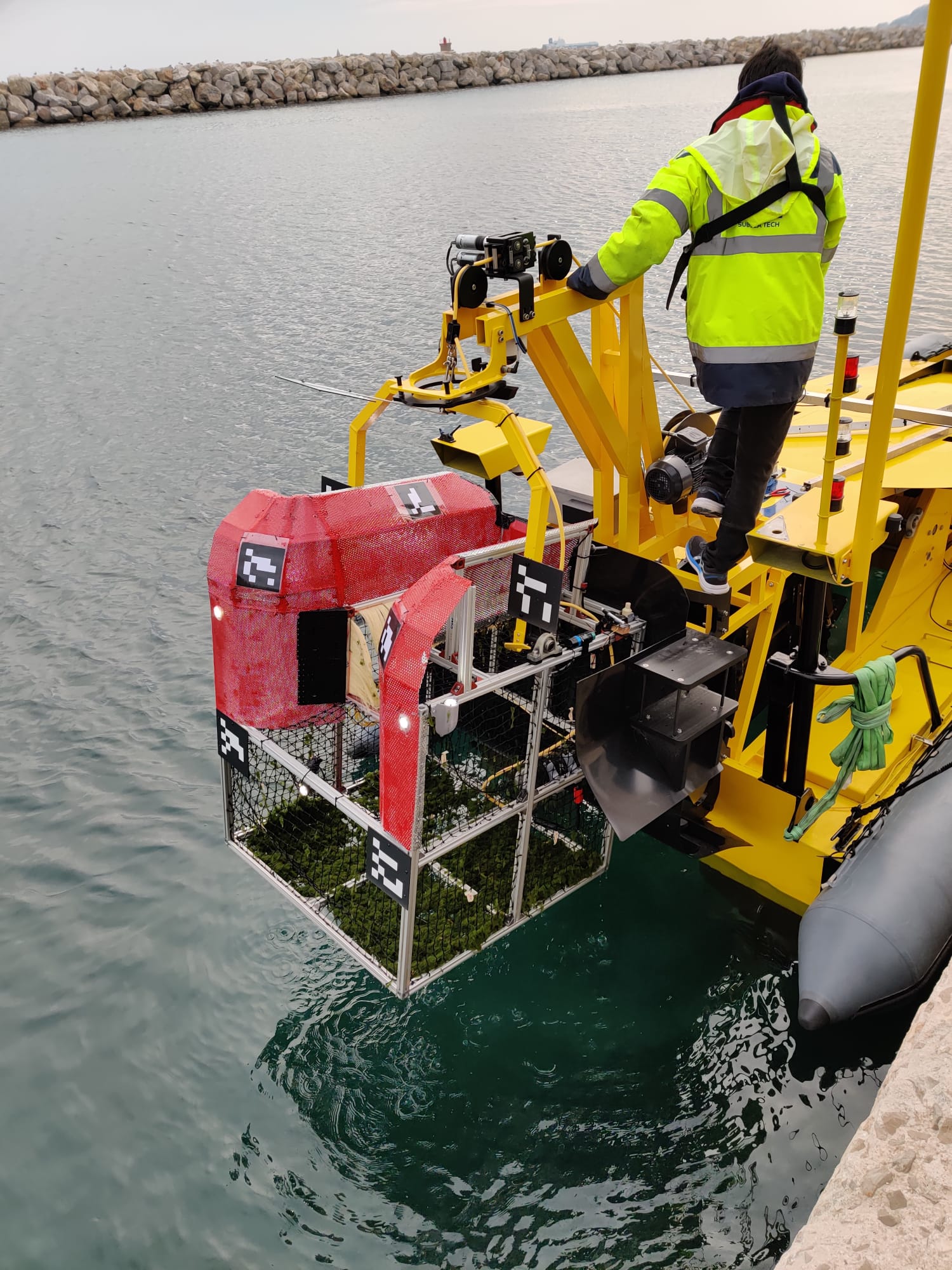
An updated version of the basket was brought on site, featuring AR tags for easier localisation from the Tortuga, fiber brisstles for easier deposit of litter without possibility of escape, and a funnel shaped entry for easier entrance of the Tortuga with the gripper. The new basket was also tested in tandem with its LARS module (Launch And Recovery System) that was developed for the SeaCAT.
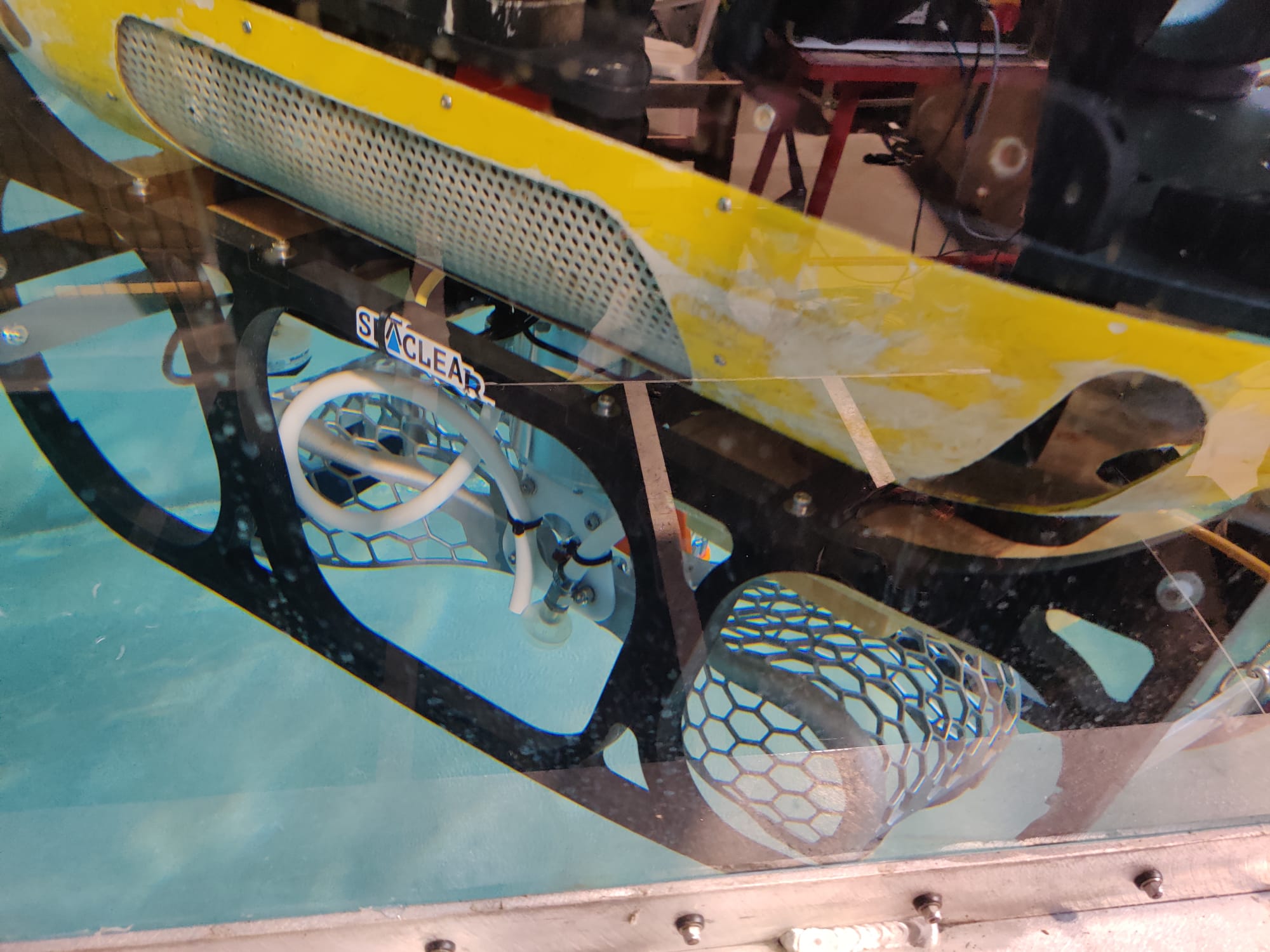
Furthermore, the Tortuga was equipped with a refined version of the gripper, which was 3D printed in aluminium to optimize for weight and resistance. Several tests demonstrated that the new gripper can handle litter of different shapes and dimensions, and is ready for deployment for the final demonstrations. Finally, we also managed for the first time to perform real-time localisation of the tortuga using the drone that was flying above.
We are now on the final stretch before our much anticipated demonstrations on Hamburg this June. Stay tuned for updates and details about the project results!
While we are progressing with the science and technology involved in cleaning up the litter from the seafloor, we took the chance to popularize the ideas behind the SEACLEAR project through participation in several trade and science fairs this summer. Here is a short overview of where was SEACLEAR featured:
AI.Society/Automatica trade fair.
This event took place in Munich from 21st to 24th of June 2022, and SEACLEAR had to be there. We arranged for an exhibition of the Tortuga collection robot, equipped with the gripper developed by TUM. The visitors could ask questions about the system, and they could see live how does the algorithm detect litter and distinguishes it from lifeforms.
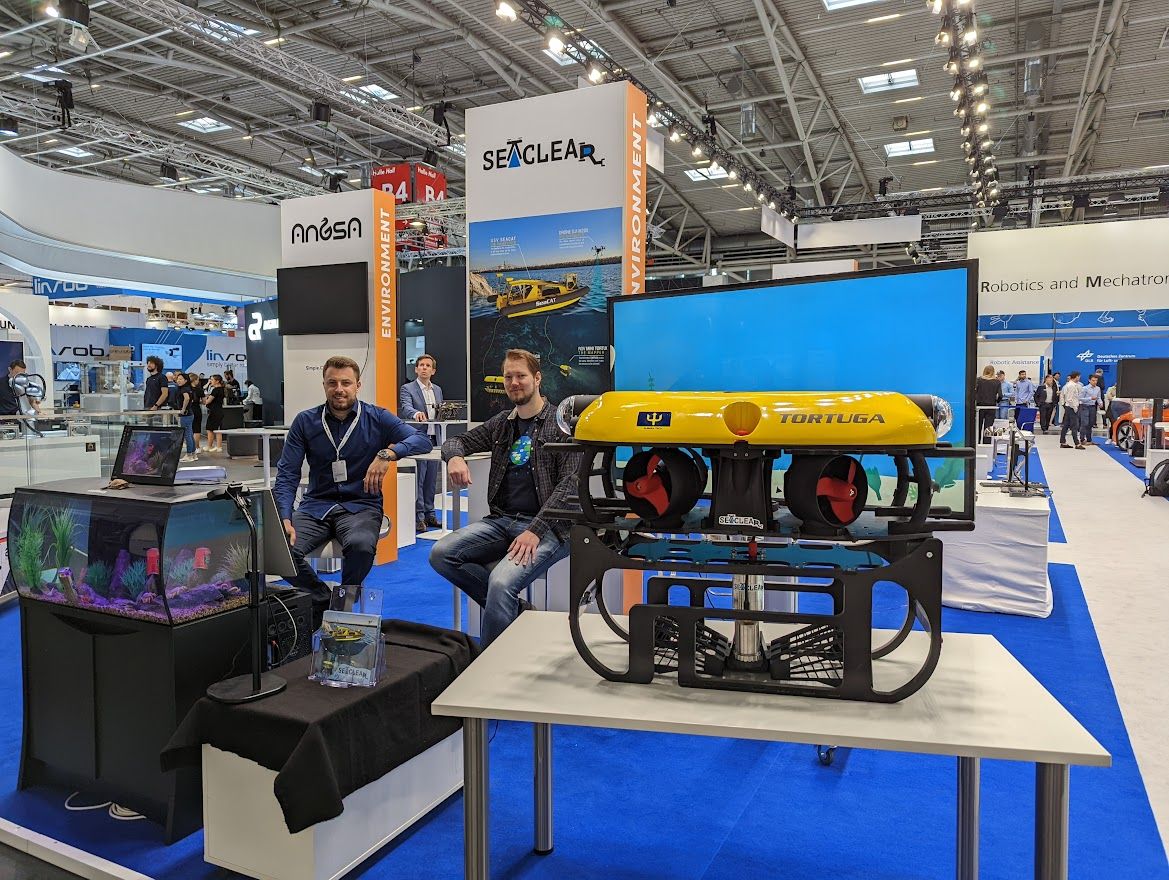
Subsea Tech Open Days.
Our partners from Subsea Tech, responsible for the beloved SEACLEAR robots, recently celebrated Open Day 2022! On 17th of June, they opened the doors of the company to the public, and they engaged with all the curious people that wanted to know more about what the company does.
Exhibition at Neue Sammlung.
What is our underwater robot doing at The Design Museum? SEACLEAR is part of an exhibition that marks the 20th anniversary of the Pinakothek der Moderne. Representative of each year is an object that addresses a development that has changed design or serves as the basis for current design movements. The exhibition is going to run until 15th January 2023, so if you happen to be in Munich until then, come visit us!
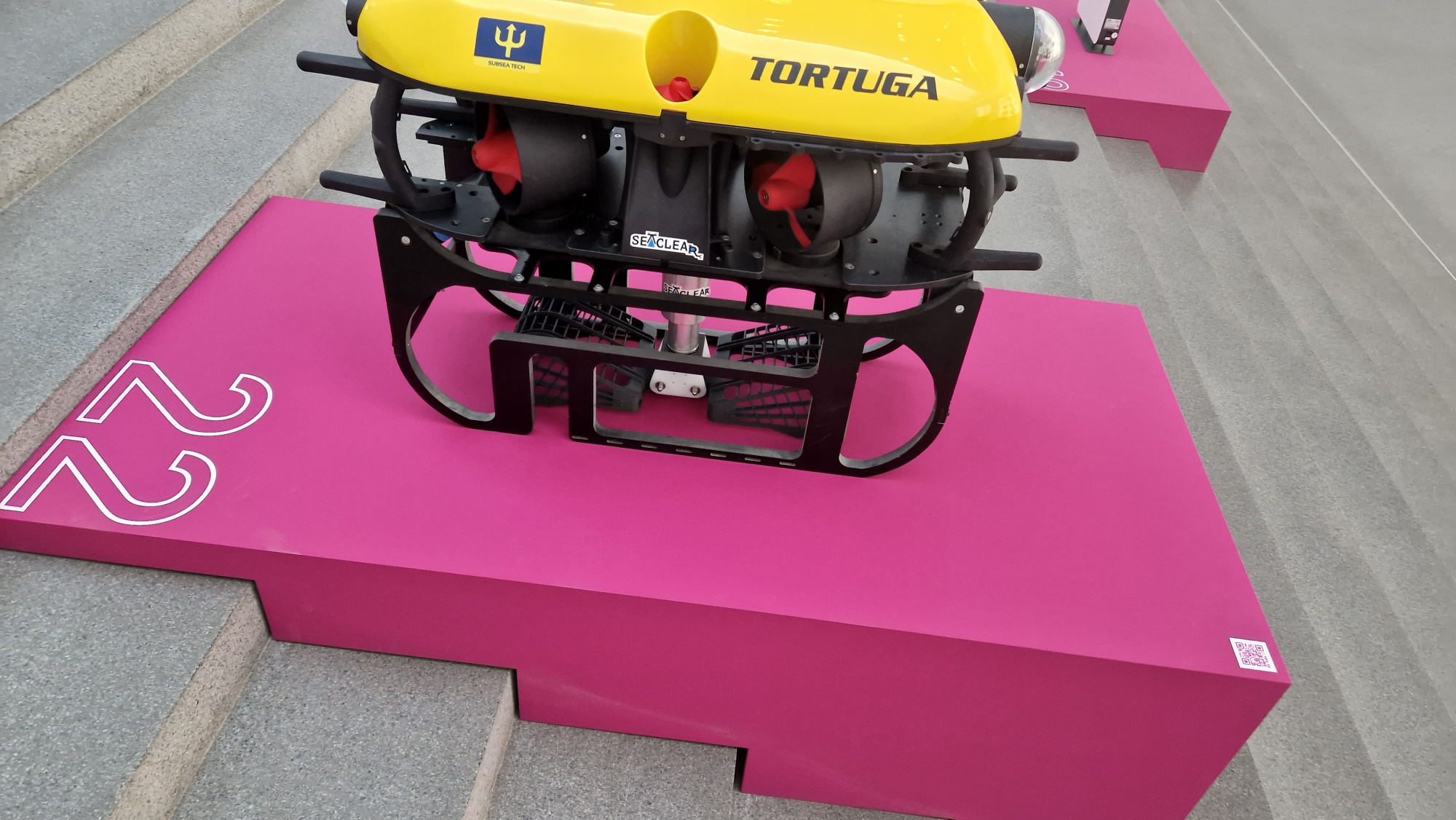
SMM 2022 trade fair
Our partners from Fraunhofer CML was present at one of the largest maritime fairs — SMM Hamburg. For nearly 60 years SMM has been a magnet for shipowners, suppliers, shipyards, and industry visitors from all around the world.
On 3-5th March 2020 in Malaga, Spain, the European Robotics Forum (#ERF2020) took place and SeaClear was present to give a high-level introduction of the project to the European robotics community, in one of its most influential meetings. The participants had a chance to get to know the SeaClear consortium and the project as a whole, whilst valuable feedback was gathered during the poster session. We were thrilled to exchange our opinions with robotics & artificial intelligence experts around Europe and to set out with the aim of becoming the first platform that uses autonomous robots for cost-effectively solving one of the world’s most critical issue, namely marine litter.
Check out SeaClear’s latest videos
Check out SeaClear’s poster at ERF2020
The kick-off and first meeting of SeaClear project took place on the 21st of January 2020, at the Faculty of Industrial Design of TU Delft. Members from each partner were present and discussed about the technical and practical details of the project, while setting the first steps for each work package.
Each of the partners had the opportunity to present their expertise, how they fit in the project, and what deliverables are they responsible for. This helped everyone create expectations and foresee possible exchange of knowledge on each work package.
See also the project start press release.
The 7th International Marine Debris Conference (7IMDC), the world’s longest-running international conference series dedicated to the issue of marine litter and plastic pollution, took place from 18th to 23rd of September, 2022 in Busan, South Korea. SEACLEAR, with a mission to build the first autonomous robots that will clean the seafloor, could not be absent from such an event.
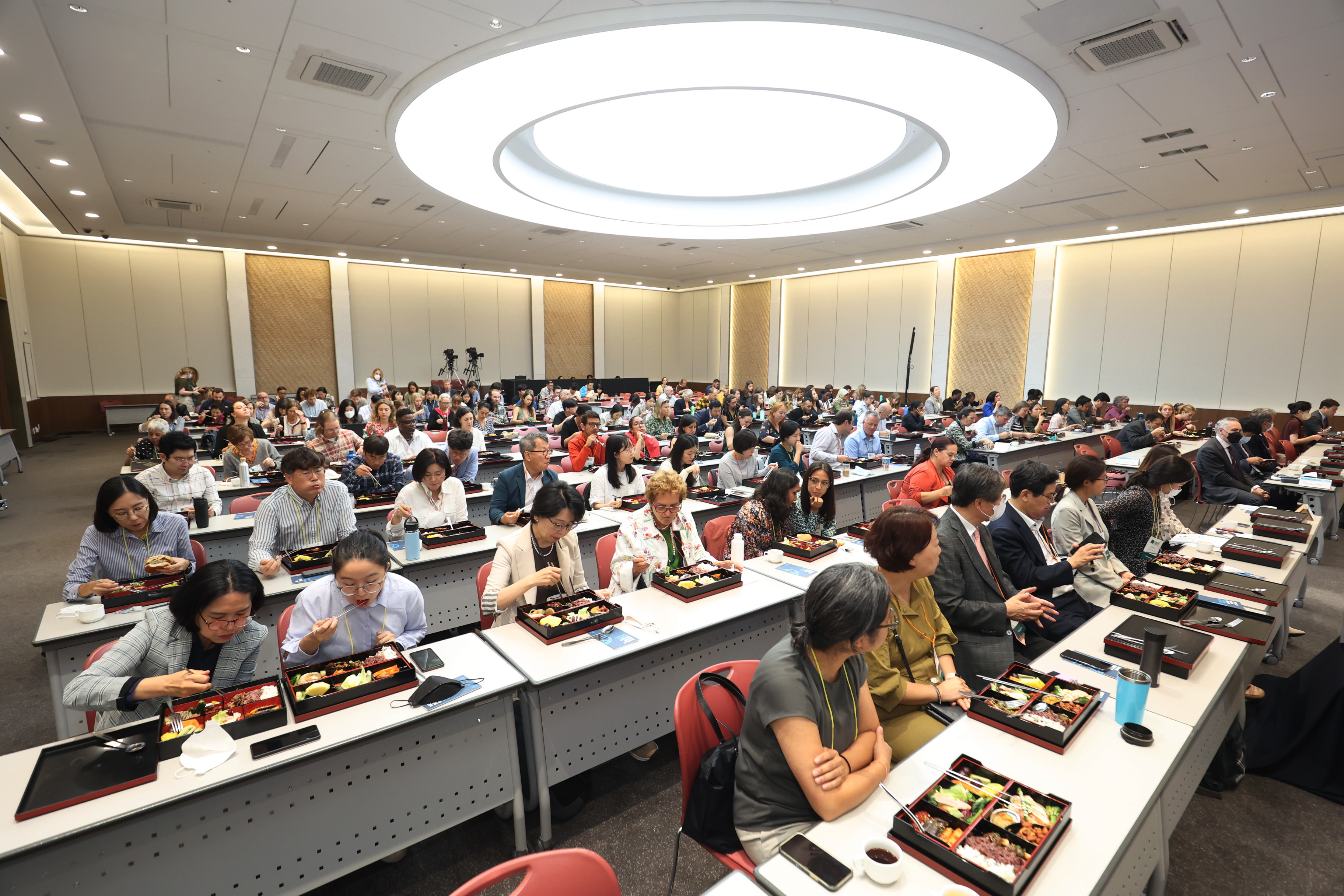 Attendees of the 7IMDC having a lunch break
Attendees of the 7IMDC having a lunch break
Stefan Sosnowski, from our partner TUM, co-hosted a technical session titled “Innovative Technology for searching, identifying and recovering marine debris” which was part of the 'Technology and Innovation' track of the conference. The session was organized in collaboration with The Ocean Cleanup, The Seacleaners, and the Innoplastic MAELSTROM project.
The SEACLEAR project will co-host a technical session on the 7th International Marine Debris Conference, organized by the United Nations Environment Programme. The session is organized in collaboration with The Ocean Cleanup, The Seacleaners, and the Innoplastic MAELSTROM project. The session is titled "Innovative Technology for searching, identifying and recovering marine debris", and will be part of the 'Technology and Innovation' track.
During the event, we will bring together initiatives addressing the challenge to intercept and remove plastic pollution from waterways and the ocean, providing a platform for exchanging ideas, experience and identifying potential complementary solutions. Details of the event are still to be defined, but it will be held in a hybrid manner with remote participation possible. Stay tuned for more details about attending the event!

This project has received funding from the European Union’s Horizon 2020 research and innovation programme under grant agreement No. 871295.
The SEACLEAR project spans four years, running from January 1st, 2020 to December 31st, 2023.
